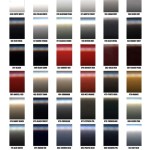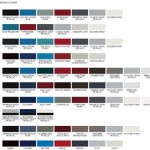Paint Colors For Living Room With Black Leather Furniture
Black leather furniture exudes sophistication and a timeless appeal. Its presence in a living room immediately creates a focal point, demanding careful consideration when selecting complementary paint colors. The right color palette can enhance the richness of the leather, create a balanced aesthetic, and ultimately transform the atmosphere of the room. Conversely, an ill-chosen color can clash with the black leather, making the space feel unbalanced, dark, or even smaller. This article will delve into the nuances of selecting paint colors for a living room featuring black leather furniture, providing insights into various options and the principles behind their suitability.
The inherent neutrality of black allows for a broad range of color pairings. However, the key lies in understanding the undertones present in the black leather (whether it leans towards warm or cool) and considering the desired mood and lighting within the room. Factors such as natural light exposure, room size, and existing architectural features all play a crucial role in determining the optimal paint color. A small room with limited natural light, for example, will benefit from lighter, more reflective paint colors, while a larger, sun-drenched space can handle bolder, more saturated hues. Furthermore, the overall design style of the room – whether it's modern, traditional, minimalist, or eclectic – should guide the color choices.
Understanding Undertones and Their Impact
Undertones are the subtle hues that lie beneath the surface of a color. Black, despite appearing neutral, can possess undertones that influence how it interacts with other colors in the room. Some blacks tend to have a cool undertone, leaning towards blue or gray, while others exhibit a warm undertone, hinting at brown or even green. Identifying the undertone in the black leather is essential for creating a harmonious color scheme. For instance, if the leather has a cool undertone, pairing it with warm-toned wall colors might create an undesirable contrast. Conversely, matching the leather's cool undertone with cool wall colors can result in a cohesive and visually appealing space.
To determine the undertone, compare the black leather to a true neutral black. In natural light, observe if the leather appears slightly bluish, grayish, brownish, or greenish in comparison. This subtle difference will inform the selection of complementary paint colors. If the leather has a cool undertone, consider colors like cool grays, blues, greens, or even purples. If it has a warm undertone, explore warmer grays (greiges), beiges, browns, golds, or even warmer shades of green. This attention to detail ensures that the wall color enhances rather than clashes with the black leather furniture.
Ignoring undertones can lead to a disjointed and unappealing aesthetic. For example, pairing a black leather sofa with cool undertones with a wall color that has a strong yellow undertone can make the black appear dull and lifeless, while the yellow might seem overly bright and jarring. Therefore, a careful assessment of undertones is a critical first step in selecting the perfect paint color.
Exploring Different Color Palettes
Once the undertones of the black leather have been identified, the exploration of suitable color palettes can begin. The options are vast, ranging from classic neutrals to bold and vibrant hues, each offering a different mood and aesthetic. The key is to consider the desired ambiance and the overall design style of the living room. Here are a few common color palettes and their potential impact on a living room with black leather furniture:
*Neutral Palette:
This palette typically includes whites, grays, beiges, and creams. These colors provide a versatile backdrop for the black leather furniture, allowing it to stand out without being overwhelming. A light gray or off-white can create a sophisticated and modern feel, while a warm beige or cream can add a touch of warmth and coziness. The selection of the specific neutral shade should be guided by the room's lighting and the leather's undertones. Lighter neutrals are ideal for smaller spaces or rooms with limited natural light, while darker, more saturated neutrals can work well in larger, well-lit rooms. Consider adding textures and patterns through textiles and accessories to prevent the neutral palette from feeling bland. *Cool Palette:
This palette encompasses blues, greens, purples, and cool grays. These colors can create a calming and serene atmosphere, complementing black leather with cool undertones. A soft blue or green can evoke a sense of tranquility, while a deeper navy or emerald green can add drama and sophistication. Purple, especially in muted shades like lavender or mauve, provides a touch of elegance. When using cool colors, balance them with warm accents such as wooden furniture or brass accessories to prevent the room from feeling cold or sterile. *Warm Palette:
This palette includes reds, oranges, yellows, browns, and warm grays (greiges). These colors can create a cozy and inviting atmosphere, contrasting beautifully with black leather furniture. Rich browns and greiges offer a sophisticated and grounded feel, while pops of red, orange, or yellow can add energy and vibrancy. However, it's important to use warm colors judiciously, as they can easily overwhelm a space. Consider using them as accent colors or in smaller doses to create visual interest without making the room feel too overpowering. *Monochromatic Palette:
This palette involves using different shades and tints of a single color. For example, varying shades of gray, ranging from light to dark, can create a sophisticated and modern look. A monochromatic scheme can be particularly effective in smaller spaces, as it creates a sense of continuity and visual harmony. When using a monochromatic palette, pay attention to texture and layering to add depth and dimension to the room.The choice of color palette is ultimately a matter of personal preference, but considering these factors will help ensure a harmonious and visually appealing result.
Considering Lighting and Room Size
Lighting and room size are critical factors that influence the perception of color and the overall atmosphere of a living room. The same paint color can appear drastically different under various lighting conditions, making it essential to test paint samples in the actual room before committing to a final choice. Natural light, artificial light, and room size all play a significant role in how paint colors interact with black leather furniture.
Natural Light:
Rooms with ample natural light can handle darker and more saturated paint colors without feeling too enclosed. The natural light will help to brighten the space and prevent the dark colors from overwhelming the room. In contrast, rooms with limited natural light will benefit from lighter, more reflective paint colors that help to maximize the available light. Light neutrals, pastels, and even some shades of white can work well in these spaces, creating a brighter and more inviting atmosphere. When testing paint samples, observe how they appear at different times of day under varying levels of natural light.Artificial Light:
Artificial light can also significantly impact the appearance of paint colors. Incandescent lighting tends to cast a warm, yellow glow, while fluorescent lighting emits a cooler, bluish light. LED lighting offers a wider range of color temperatures, allowing for greater control over the lighting environment. Consider the type of artificial lighting that will be used in the living room and choose paint colors that complement the lighting's color temperature. For example, if the room is primarily lit with incandescent bulbs, warmer paint colors might appear more vibrant and inviting, while cooler colors might appear washed out. Conversely, if the room is lit with fluorescent bulbs, cooler paint colors might appear more balanced, while warmer colors might appear overly yellow.Room Size:
The size of the living room is another important consideration. Smaller rooms tend to feel more enclosed when painted with dark colors, while larger rooms can handle darker shades more effectively. In smaller spaces, opt for lighter, more reflective paint colors to create the illusion of spaciousness. Vertical stripes can also help to elongate the walls and make the room feel taller. In larger rooms, darker colors can create a more intimate and cozy atmosphere. Consider using a combination of light and dark colors to create visual interest and define different areas within the room.By carefully considering lighting and room size, it's possible to select paint colors that enhance the black leather furniture and create a comfortable and visually appealing living room environment. Testing paint samples under various lighting conditions and in different areas of the room is crucial to ensuring a successful outcome.

Ask Maria What Colours Work Best With Black Furniture

Interior Insider Acquires Interiordecoratingcolors Com Black Leather Living Room Furniture Sofa

How To Decorate A Living Room With Black Leather Sofa Decoholic

Modern Home Black Leather Couch Design Ideas Pictures Remodel And Decor Brown Living Room Blue

How To Decorate A Living Room With Black Leather Sofa Decoholic

19 Black Leather Sofa Ideas For Your Living Room
:max_bytes(150000):strip_icc()/thespruce-blacksofa-brophyinteriors-626b147410c048019db949219100067c.png?strip=all)
41 Living Room Ideas With Black Couches From Neutral To Bold

19 Black Leather Sofa Ideas For Your Living Room

Living Room Decorating Ideas With Black Leather Sofa Furniture

Top 40 Luxury Living Room Decor Ideas With Black Sofa Best Interior Design Tour 2024
Related Posts








